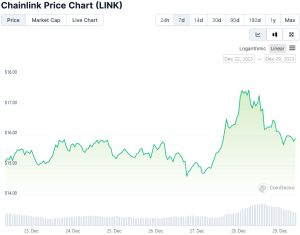
A new report sheds light on the potential use of a stablecoin in Nigeria, in addition to regulations on ICOs and its national CBDC – eNaira.
By the end of 2022, the Central Bank of Nigeria (CBN) introduced the “Nigerian Payments System Vision (PSV) 2025”, a strategic agenda for the country’s payment system over the next two years.
The document covers several key highlights, some of the most remarkable aspects including the potential adoption of stablecoin.
Nigeria Wants a Stablecoin
The stablecoin is potentially subject to regulatory oversight. The implementations of stablecoin, as noted by the CBN, “are likely to be a successful payment mechanism.”
It is, therefore, important to establish a legal framework for that type of cryptocurrency.
The CBN is also looking to regulate initial coin offerings (ICOs). ICO is a popular form of fundraising conducted by cryptocurrency initiatives. ICOs drove huge interests in its early days with Ethereum being a successful example.
However, the rapid growth of ICO went rogue. The number of projects that ripped customers off were multiplied, urging regulators to take actions.
Regulated ICOs, according to the report, will not only add a protection layer to customers’ investments, but also harness their benefit sides.
The CBN pointed out that ICOs could be a new fund-raising approach in both wholesale and retail markets. The bank is working with the Securities and Exchange Commission (SEC) to develop a regulatory framework if they decide to move forward with “an ICO-based investment solution.”
Apart from those above highlights, the CBN also suggested the settlement of cybersecurity standards in compliance with regulations. Cyber crimes have evolved over the past few years following the growth of digital innovations.
The bank wants to employ AI and Big Data methods to resolve the issues, initially by improving the level of vulnerabilities’ identification.
Sharp Focus On CBDCs
A CBDC was emphasized in the report even though its adoption rate fell short of what authorities had anticipated.
The eNaira, a digital currency issued by the central bank of Nigeria, was formally launched in October 2021. Nigeria became one of the first nations to use CBDC with the introduction of its national digital currency.
The biggest issue, though, is the country’s present low level of mainstream adoption. Less than 0.5% of Nigerians were said to have utilized the eNaira as of October 25, 2022.
The CBDC system needs to be developed as Nigeria strives to become a cashless nation in the future. According to the CBN, CBDC can completely implement its plan to change the Nigerian economy in three to five years.
The majority of the major central banks are also working to develop CBDCs. Fourteen pilot CBDCs are now being run. China is testing CBDCs more thoroughly than any other large economy, according to this.
Beijing will probably urge consumers all around the world to use its virtual currency for the Winter Olympics, even though an official launch date has not yet been specified.
The Boston Federal Reserve is working with the Massachusetts Institute of Technology to publish their original research while the U.S. Federal Reserve (FED) is looking at a digital dollar.
Given that 2023 will come after a year of terrible events and an opaque regulatory environment. The European Union (EU) passed the MiCA law last year, setting the stage for the region’s nations.
This year, the US is also working on more transparent legislation pertaining to digital money.
Establishing a thorough regulatory framework to safeguard cryptocurrency users and provide a level playing field in the market is difficult since these regulations must be implemented with an eye toward how to best protect consumers from hazards.
On the other hand, global regulatory interference could limit the growing industry, but only time will tell.
The post Nigerian Payments System Vision: Framework for Stablecoins & ICOs appeared first on Blockonomi.


















